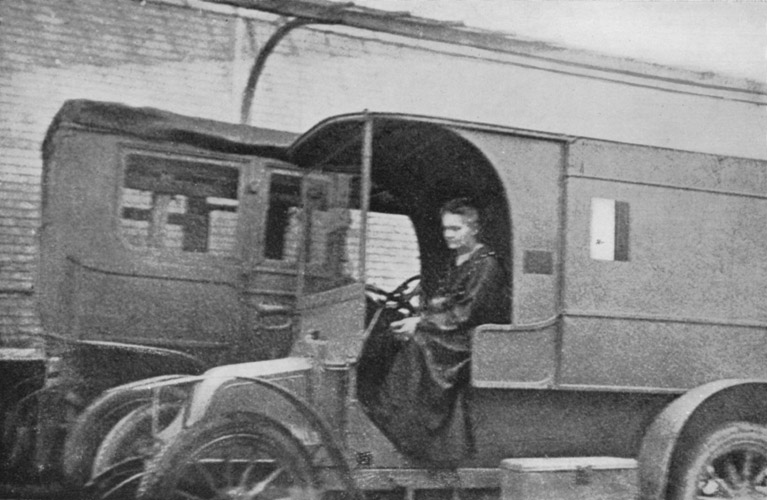And Speaking of X-rays….
Several of you responded to my recent post on the subject with interesting information about the early use of x-rays.*
This story caught my imagination for several reasons that will be obvious to those of you who are regular visitors here on the Margins:
When World War I broke out in 1914, Marie Curie (already a two-time Nobel Prize winner) relocated her precious supply of radium (one small ounce) from Paris to Bordeaux. Then she considered how she could best serve her adopted country in wartime.
Doctors in major cities were already using x-rays to view broken bones and locate foreign substances in the human body. Combatant nations quickly established radiology units in rear-area hospitals, but were slower to recognize the importance of x-ray units near the frontline, where a fast, accurate assessment of a wound allowed for quicker and more precise surgery, and better recovery rates.
Recognizing that the available services were inadequate, Curie leveraged her reputation to secure an appointment as the head of the radiology auxiliary to the Military Health Service. Then she convinced wealthy acquaintances to donate money and cars, automobile shops to refit the cars as vans, and manufacturers to provide x-ray equipment. She learned to drive a car and gave herself a quick education in anatomy, x-ray operation, and automobile repair.
By late October, 1914, the first 20 mobile radiology units, which French soldiers dubbed petites Curies,** were ready, manned (and in many cases womanned) by a team made up of a doctor, an x-ray technician and a driver. Madame Curie herself, with her seventeen-year-old daughter Irene as her assistant, drove one of the units to the battlefield.
By the end of the war, France had more than 500 stationary x-ray stations and some 300 mobile units, with 800 male technicians and 150 women trained by Madame Curie and Irene in an intensive six- to eight-week course at the Radium Institute in Paris.
At war’s end, the French government gave Irene a medal for her war work, but did not officially recognize Madame Curie’s role in saving countless soldiers’ lives.
*For more information on the use of x-rays in shoe stores: When X-Rays Were All the Rage, A Trip to the Shoe Store was Dangerously Illuminating
**I am reminded of another woman’s military medical innovation: Isabella of Castile created mobile field hospitals, known as the Queen’s Hospitals.
With hat tips to Paul and Karin for the link and the story.






This was an enlightening insight into her mindset as a Physician and Humanitarian first. The French have many times been slow to commit or comment on a lot of things that way, dragging their feet as all politicians can. Thank you for your input today.